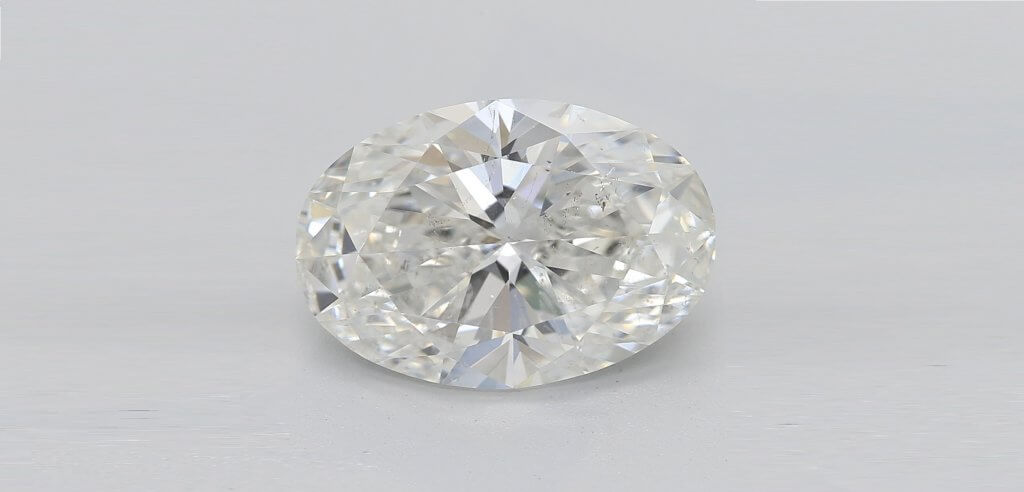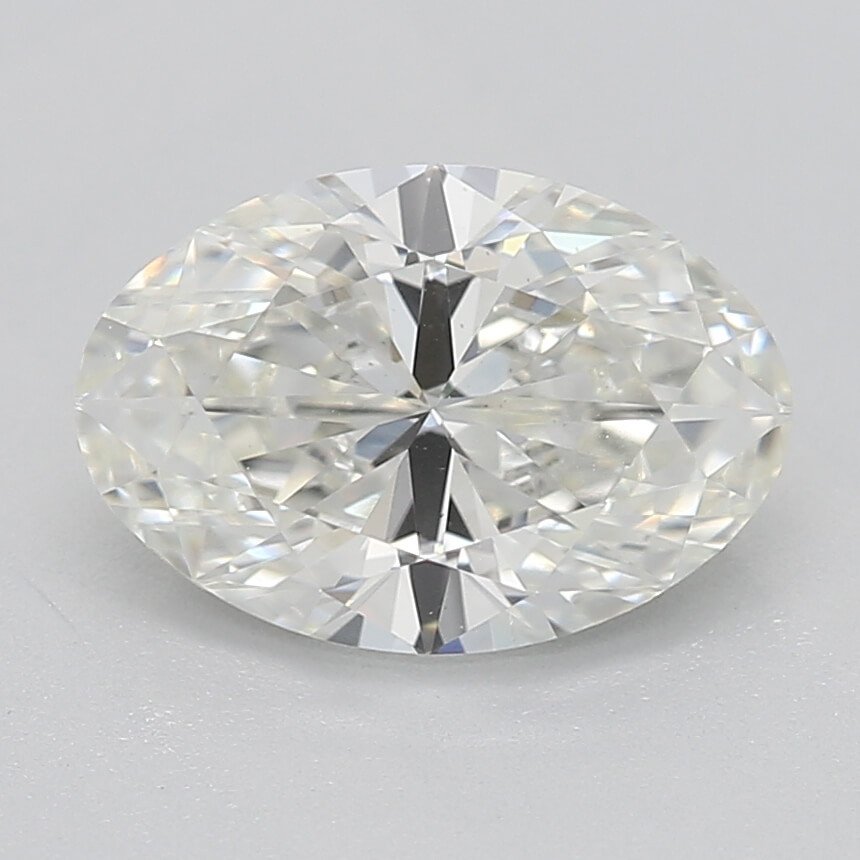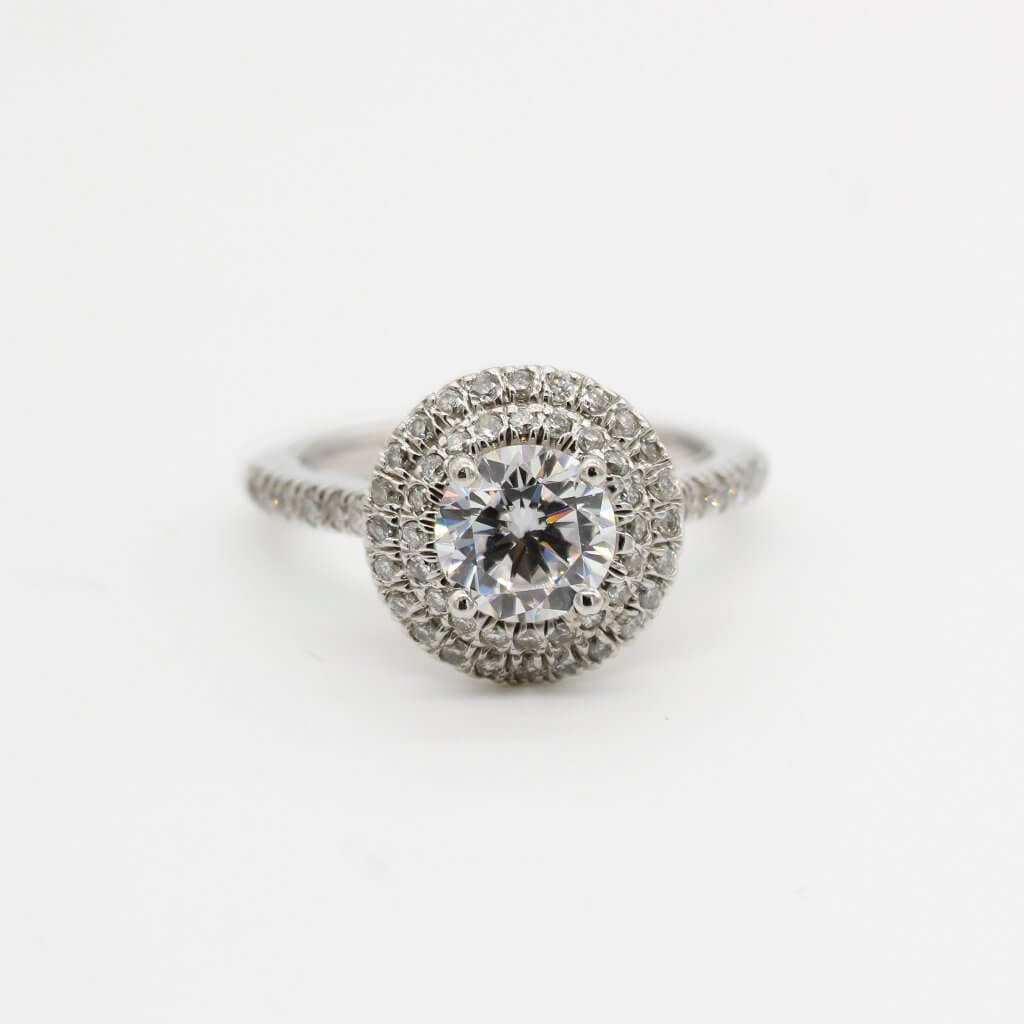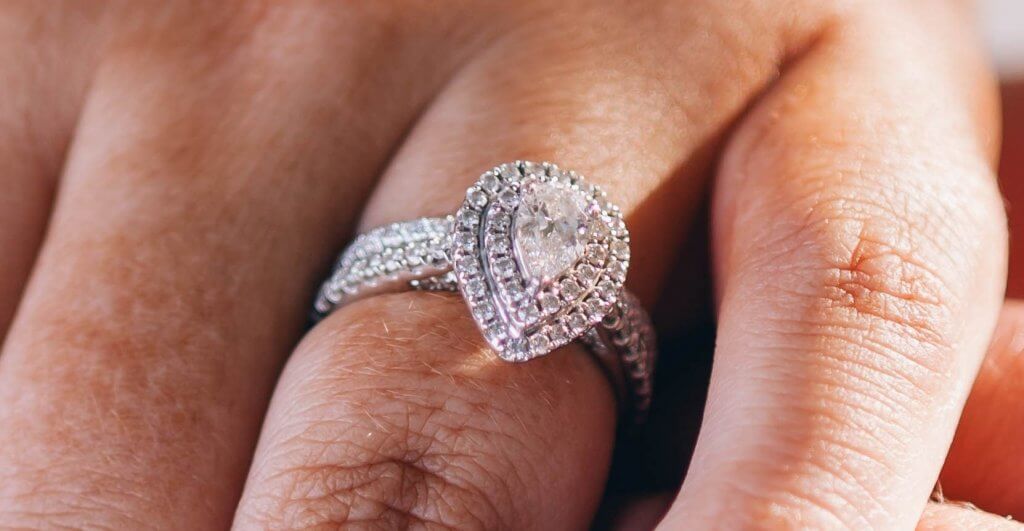What You Didn’T Know About I Color Diamonds
Key Takeaways
- The I color grade is the sixth grade from the top, but the presence of color is still very difficult to see.
- It is easier to spot when viewed from the side, but that shouldn’t really be a dealbreaker when considering this diamond.
- In some shapes, such as the Cushion – which is known for retaining color – a slight hint of yellow may be visible. This is why it’s vital that you shop for a diamond in person, rather than through a computer screen.
- I diamonds are a good option, provided you don’t rush into anything. After all, if they allow room for better grades when it comes to the Four Cs as a whole, then you are making a wise choice and investment.

Most first-time diamond shoppers will agree to the idea that there is way more to a diamond than what meets the eye.
In the past, you’ve likely encountered diamonds after they’ve already been set within a ring – meaning that, when you decide to start looking into the idea of purchasing an engagement ring for your own partner, it’s all too easy to jump forward a couple steps and start thinking about the completed article.
And, while it’s great to look ahead and get your own vision for the ring straight in your head, there are a few things you need to understand before you can make a good investment into your diamond.
Color is, of course, one of them – and, in particular, a group known as the ‘Near Colorless’ diamonds (but more on that below).
- The Color Grade
- The Color Scale, in a Nutshell
- What Does I Mean in Diamonds?
- Is I Color Noticeable?
- Are I Colored Diamonds Too Yellow?
- Which Diamond Color is Better G or I?
- Do I Color Diamonds Sparkle?
- I Color and Price
- How Much Do I Color Diamonds Cost?
- Are I Color Diamonds Worth it?
- Diamond Color and Shape
- Which Diamond Shapes Hide Color?
- Our Summary
The Color Grade
There’s very little variance between one color grade and the next. At first, this can seem like an added complication – how are you supposed to know which one is the better choice if you can’t spot any difference between them, right? But, in time, you’ll realize that this can be used to your benefit, provided you understand the basics of diamond color…
The Color Scale, in a Nutshell
You likely already know that Color represents one of the Four Cs – or, in other words, the four most important features anyone shopping for a diamond needs to consider, not only in order to get a beautiful stone, but also to make sure that they’re getting the very best diamond they can with their price range.
Like clarity and cut, color is graded according to a scale devised by the GIA. While other institutions have created their own methods for grading color, the GIA’s is the most consistent and precise – meaning it is the most widespread, and the one you should get your head around.
The GIA color scale allows you to quickly understand how close to (or how far from) colorless your diamond is, with diamonds lower on the scale featuring that discernible yellow or brown tint that makes some stones such poor choices for jewelry.
The color scale runs from D color diamonds through to Z diamonds – or, alternatively, from diamonds that are totally colorless and clear through to diamonds that appear unmistakably yellow under normal lighting:
| Colorless | Near Colorless | Faint | Very Light | Light |
| D, E, F | G, H, I, J | K, L, M | N, O, P, Q | S, T, U, V, W, X, Y, Z |
What Does I Mean in Diamonds?
I is the sixth color grade from the top, and is given during a close inspection from expert diamond graders using the GIA’s color scale.
As you can see from the scale above, the I color grade falls in the sixth position from the top – and within a category known as Near Colorless.
At first glance, it can look a pretty long way from the top. After all, as a first time shopper it’s pretty easy to fall into the trap of thinking that you’ve got to cling to those top two or three grades just to avoid presenting your future bride with a butter-yellow diamond.
But there is more to this category than means the eye – and an I diamond could be your ideal match…
Is I Color Noticeable?
Most of the time, no. In some diamonds, color is a little easier to spot when the stone is viewed from the side, rather than from above but, in many I color diamonds, you’d still have a hard time spotting any yellow from any angle.
Diamond color is graded by experts – experts who have lighting and tools optimized for identifying the presence of color within a diamond. Not only that, but the color scale features twenty-three separate grades, meaning that you have to pass through quite a few grades before you start to notice the color for yourself, under normal lighting conditions and without magnification.

Then again, every diamond is unique and, in some cases, yellow will be noticeable in an I color diamond. As a newcomer to the diamond world, you might struggle to see it for yourself; a reliable jeweler will, however, be able to give you an expert appraisal, and help you to see what they can see.
Are I Colored Diamonds Too Yellow?
In many cases, no. A lot of I color diamonds will appear clear, and their yellow tint will only be visible under ideal lighting conditions – and possibly magnification.
Most first-time diamond shoppers begin researching the Four Cs with a view to picking a definitive ‘sweet spot’ but, the trouble is, that sweet spot is different for everyone – and every diamond.
If you’ve already done your research on clarity, then you’re no doubt aware of the fact that, while some people will be able to find a great diamond at either the SI1 or SI2 clarity grades, others will need to aim a little higher in order to ensure that they get an eye clean diamond.
Why? Because the size and shape of the diamond will influence whether or not a grade of, say, SI1 leads to an eye clean diamond, or one that is visibly included.
But, as we mentioned before, plenty of I color diamonds out there won’t feature any noticeable yellow tint – proof that you don’t need to invest thousands into a Colorless diamond grade.
Which Diamond Color is Better G or I?
On paper, G is the better choice than I. These diamonds will feature less color since the G grade sits on the cusp of Colorless and Near Colorless diamonds.
Put it this way: if you had to pick one color grade to shop from, then it’s only natural that the G diamonds on the market right now will be less likely to yield a stone with visible color. Yes, most I color diamonds appear clear, but G color diamonds more so.
Fortunately, however, we don’t need to settle on one color grade – not until we’ve hit upon the diamond we’re happy to invest in.
With that in mind, there’s plenty of instances where I color diamonds are the better choice. Provided the color does not infringe on the diamond’s appearance under normal conditions, then shoppers could save hundreds of dollars by opting for an I color diamond instead.
Do I Color Diamonds Sparkle?
Yes, no amount of color will impact a diamond’s sparkle. Only a poor cut, major inclusions (such as clouds) or very strong fluorescence will impact light performance.
You can (and should) read more about idea cut diamond proportions before you start, and brush up on your understanding of diamond fluorescence, too. Cloudy or poorly proportioned diamonds (such as those with too large a table, or too shallow a cut) will suffer from an impaired sparkle, and will let down the appearance of an otherwise beautiful engagement ring.
But, until you feel confident with these subjects, keep in mind that color is not something that effects light performance. It does, however, hold the potential to impact the beauty of the diamond, regardless of sparkle.
Is I Clarity Good for Diamond?
A grade of I only refers to color, not clarity. The GIA’s clarity scale runs from Flawless and Internally Flawless through Very Very Slight Inclusions, Very Slight Inclusions, Slight Inclusions, and Inclusions, rather than letters of the alphabet.
Given the fact that Cut is almost unanimously regarded as the most important of the Four Cs, color and clarity are often ‘weighed up’ against one another by shoppers looking to understand which one requires more attention, and which one can be put on the backseat.
The question of Color vs Clarity isn’t one with a totally straightforward answer, but it definitely helps to get this one straight in your mind before you start seriously shopping for your own diamond.

I Color and Price
You’ve probably caught onto the idea by now that the I color grade can be a great place to find an excellent deal. Afterall, there’s a lot more to a diamond than what you can see – but, thankfully, it’s way more important to invest in what you see, rather than what’s printed within its report.
How Much Do I Color Diamonds Cost?
The cost will depend entirely on carat weight, clarity and cut, but it’s good to keep in mind that I grade diamonds can cost thousands of dollars less than diamonds from the Colorless color category, and will offer some of the most affordable choices from the Near Colorless diamonds out there.
I diamonds sit at the lower end of the Near Colorless group, with only J color diamonds between them and the ‘Faint’ color range (K, L, and M). Opting for a J diamond will shave a little more off the cost, but at a slightly greater risk of some visible color.
The best advice we can give you is to keep an open mind, and keep the fact that visually colorless diamonds are available at a great price at this color grade at the front of your mind, but never to jump to any decision before you see the diamond in person.
You can’t properly judge a diamond’s color via a computer screen, which means you can’t properly judge whether or not a diamond is on the market for a great price without going to see it in person, and with the guidance of a reputable jeweler by your side.
Are I Color Diamonds Worth it?
It’s possible. An I color diamond could be a great choice, as, provided it’s eye clean, it means you could afford a slightly bigger diamond.
We’re not going to say that every I color diamond on the market today represents an excellent opportunity for you. For starters, some I color diamonds are poorly cut, visibly included or high in fluorescence. What’s more, some I color diamonds are just too yellow in appearance to look beautiful in an engagement ring.
An I color diamond can be worth it.
If you’re keen to stick to the lower end of the Near Colorless category, then it can be helpful to understand how the ring setting can complement a very lightly tinted diamond, and to make it appear clearer.
Here, contrast will be your friend. Gold and rose gold will look way warmer toned than a Nearly Colorless diamond, meaning that any vague sense of yellow will be way harder to spot than it would be if that same diamond was contrasted against the stark, bright shine of a platinum setting.
Nevertheless, if your bride-to-be wears nothing but silver, platinum, and white gold, then a diamond with a vague though discernible tint is not worth it.
Diamond Color and Shape
Above, we mentioned how certain shapes will lend you a little more freedom than others when it comes to finding your own ‘sweet spot’ on the color scale – and it’s pretty important you keep this in mind going forward.
Our Summary: Are I Color Diamonds Good?
I color diamonds are a great choice – some of the time. There are plenty of beautiful I color diamonds on the market today that will appear Near Colorless and, once set within a complementary ring setting, appear totally eye clean under ordinary lighting.
Any of the Near Colorless grades are capable of offering plenty of choice for those looking to purchase a diamond with no visible yellow tint, without having to pay the premium costs that are attached to diamonds belonging to the Colorless grades.
There is a very good reason why I and J color diamonds have not taken over the diamond market, however, and that’s because plenty of shoppers will still struggle to find the ideal diamond at this grade.
Whether they’re aiming for a larger diamond, or one that features one of the less forgiving shapes – or, of course, an engagement ring that celebrates the stark, bright glow of platinum, and can’t afford to create any contrast between the metal and their chosen diamond – an I color grade could throw more curveballs than its worth.
All in all, yes, I color diamonds are great – but they’re not the best choice for everyone. If you find one you’re drawn to, go see it in person, and decide for yourself whether you can see any hint of yellow.

Jul 18, 2022 By Willyou.net
What You Don’T Know About K Color Diamonds

Sep 2, 2021 By Willyou.net
Diamond Color vs Clarity | What Matters More?








